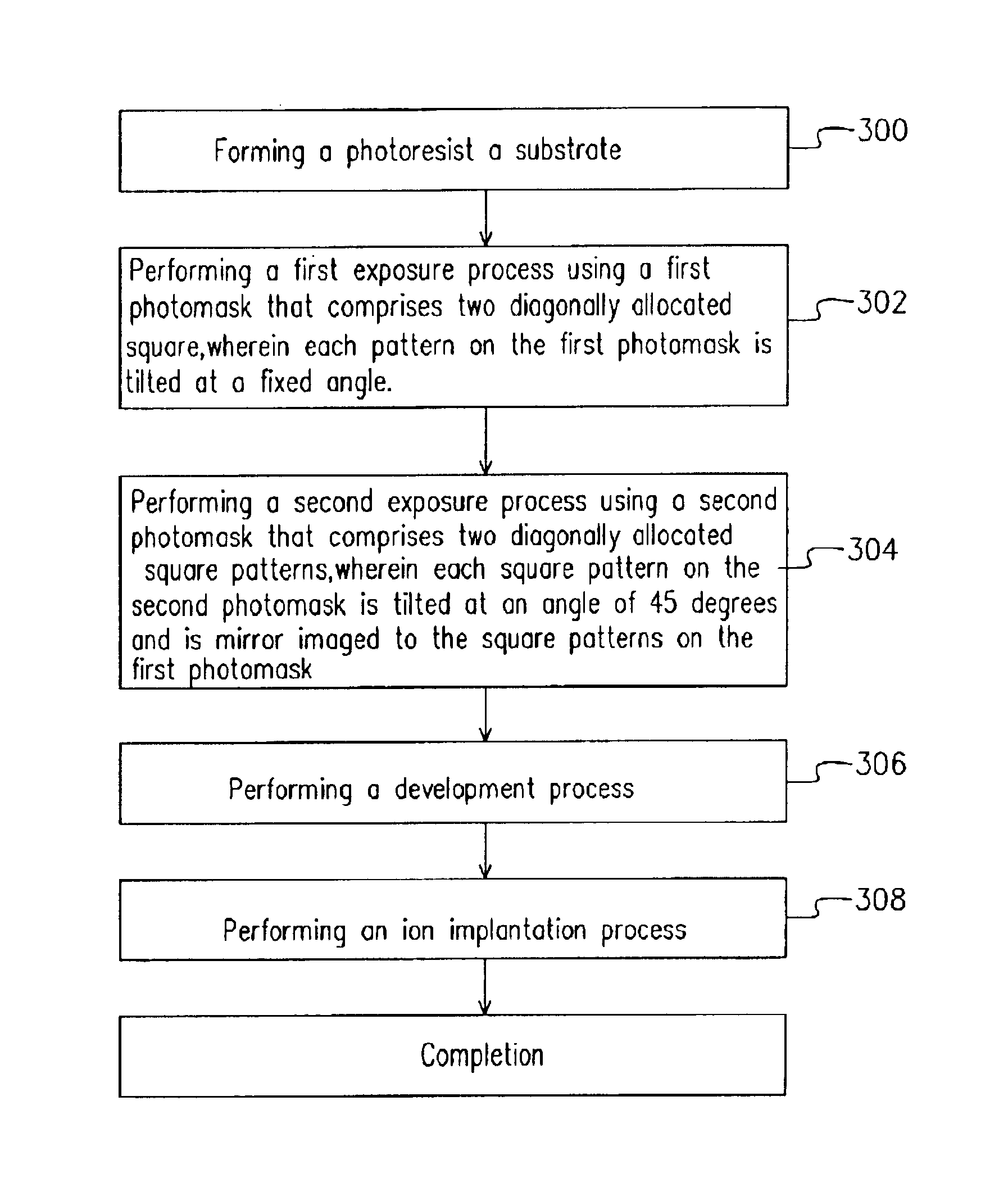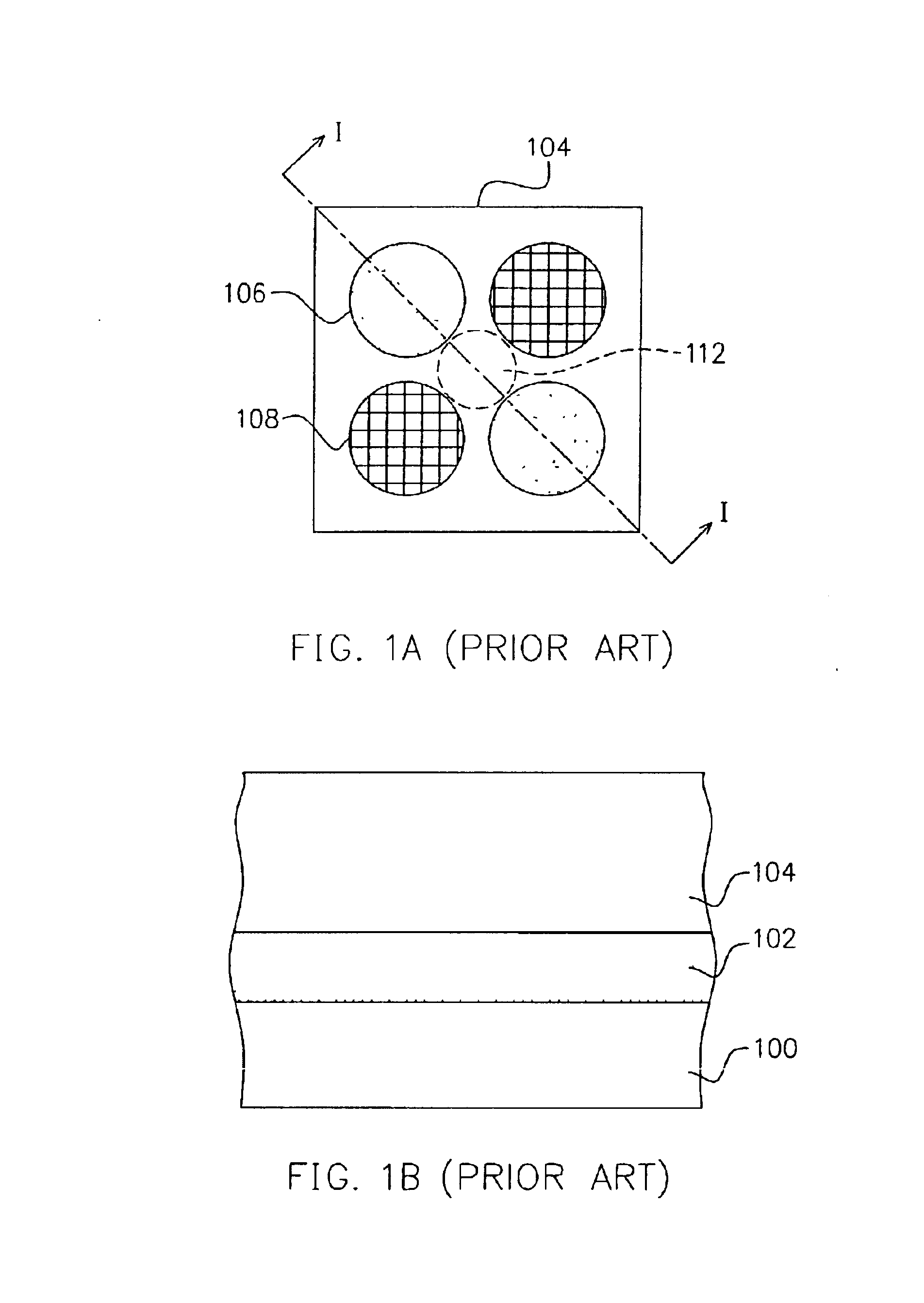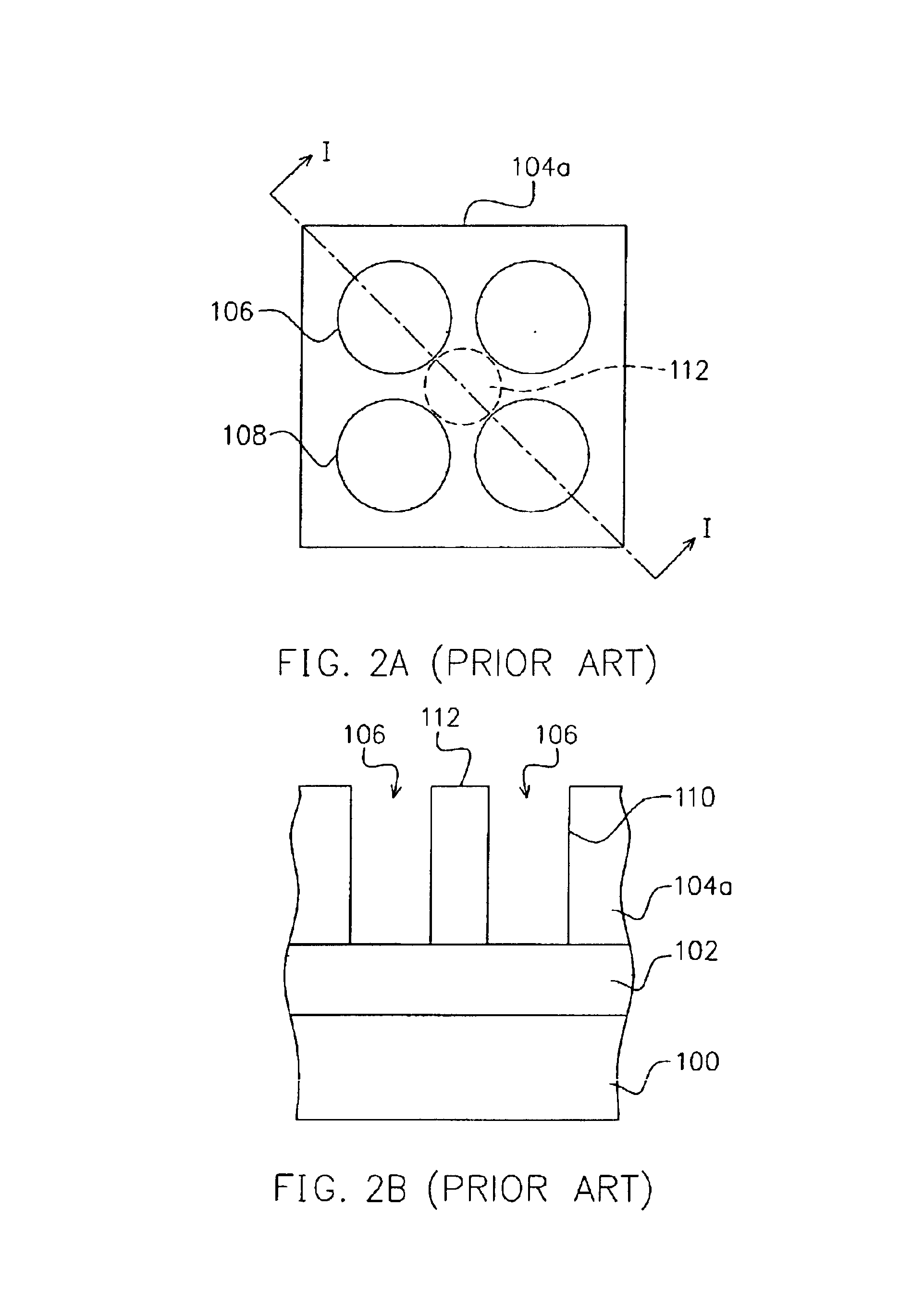Fabrication method for semiconductor hole
a technology of semiconductor holes and fabrication methods, which is applied in the direction of photomechanical treatment, instruments, electrical equipment, etc., can solve the problems of affecting the actual amount of exposure light to the photoresist, affecting the pattern density, and generating defects in the dielectric layer in the subsequent process, so as to prevent the peeling of the photoresist
- Summary
- Abstract
- Description
- Claims
- Application Information
AI Technical Summary
Benefits of technology
Problems solved by technology
Method used
Image
Examples
Embodiment Construction
FIG. 3 a flow diagram illustrating the process flow for fabricating a semiconductor hole according to one embodiment of the present invention.
Referring to FIG. 3, in step 300, a photoresist is formed on a substrate, wherein the substrate comprises, for example, a semiconductor substrate, a semiconductor device, a conductive layer, a dielectric layer, etc. In one example, step 300 can include forming a semiconductor device on a semiconductor substrate, followed by forming a dielectric layer on the semiconductor substrate to cover the semiconductor device. The dielectric layer is then planarized, followed by forming a photoresist layer on the planarized dielectric layer.
Thereafter, in step 302, a first exposure is performed using a first photomask that comprises two diagonally allocated polygon patterns, wherein each polygon pattern on the first photomask is rotated a fixed angle from its arrayed position. The photomask of the present invention comprises square patterns, which are exp...
PUM
 Login to View More
Login to View More Abstract
Description
Claims
Application Information
 Login to View More
Login to View More - R&D
- Intellectual Property
- Life Sciences
- Materials
- Tech Scout
- Unparalleled Data Quality
- Higher Quality Content
- 60% Fewer Hallucinations
Browse by: Latest US Patents, China's latest patents, Technical Efficacy Thesaurus, Application Domain, Technology Topic, Popular Technical Reports.
© 2025 PatSnap. All rights reserved.Legal|Privacy policy|Modern Slavery Act Transparency Statement|Sitemap|About US| Contact US: help@patsnap.com



